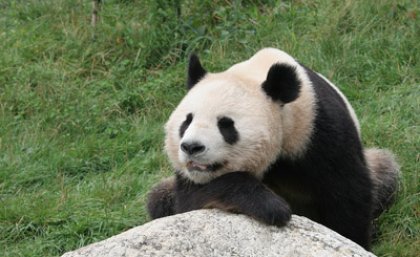
Worldwide, around 20,000 endangered animal species are competing for scarce conservation funds – but just 80 ‘celebrity species’ are hogging most of the attention.
Professor Hugh Possingham of the National Environmental Research Program’s (NERP) Environmental Decisions Hub and The University of Queensland says the world has developed an inefficient way of choosing which animals facing extinction to save, leading to extinctions that could have otherwise been avoided.
“Around 80 mammal species are used by international non-governmental organisations (NGOs) to raise funds for conservation,” Professor Possingham said.
“These flagship species, such as panda bears, tigers, lions and rhinos, are charismatic and have high marketing appeal, leading to the success of sponsorship programs.
“However, if money is being raised for 80 charismatic species, what happens to the other 1000 threatened mammal species and the 19,000 threatened plants, birds, reptiles, frogs, insects and obscure species?”
Most conservation dollars are spent within 100 kilometres of where they are raised, with the choice of which species to save is often based on ‘donor appeal’ and the animal’s closeness to extinction.
“So if you’re an obscure animal or plant in a remote place, you have next to no hope of getting conservation resources,” Professor Possingham said.
“For instance, conservation efforts are focussed on Europe and North America because they have the most resources, while places like Brazil, Mexico, Australia, Madagascar and Indonesia have the widest range of threatened species in need of help.
“There are also cases where we’re spending a lot of money to save a species that’s on its last legs – and could end up being extinct – when we could rescue several other dwindling animals or plants with much less funds.”
Professor Possingham says that while it’s not possible to save all threatened species, a systematic approach in choosing which ones to save will help ensure that a limited budget can achieve the best outcome possible.
“Habitat loss affects over 2000 mammal species,” he says.
“As people identify more with a species than with a habitat, we can still choose some iconic animals or plants to ‘represent’ the area.”
NERP researchers have developed an evaluation method that allows governments to estimate the cost to secure a particular species.
New Zealand and New South Wales governments use this technology in their conservation plans.
“We need to ask more questions and encourage public debate, such as why are we saving this particular animal instead of another,” Professor Possingham said.
“We need to ask for evidence from governments and NGOs to ensure that they have spent the money cost-effectively.
“We can also ask local councils if there are any threatened animals or plants nearby and how we can best save them.
“The sad truth is we can’t save everything with current funding levels, but we should demand that the available money achieves the greatest outcome possible.”
Professor Possingham and Mr David Salt’s article “Clash of the icons” is published in the journal Decision Point.
The Australian Government funds the National Environmental Research Program (NERP) to inform evidence-based policy and sustainable management of the Australian environment.
Media: Professor Hugh Possingham, NERP Environmental Decisions Hub and UQ, +61 (0)434 079 061 h.possingham@uq.edu.au. Karen Gillow, Science Communications, NERP Environmental Decisions Hub and UQ, +61 (0)7 3365 2450 or +61 (0)402 674 409 or k.gillow@uq.edu.au. Fiona Cameron, UQ media, +61 (0)7 3346 7086 or f.cameron@uq.edu.au




